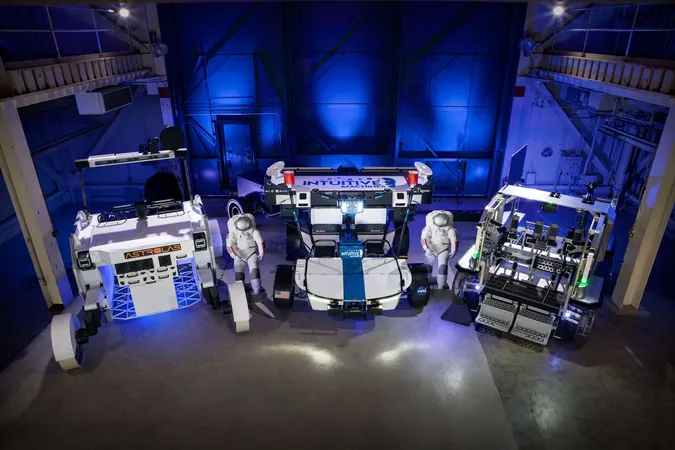
NASA's Moon Rover Testing: Are We Ready for Lunar Exploration?
2024-12-23
Author: Noah
NASA is making exciting strides in its Artemis campaign, which aims to land astronauts on the Moon's surface and conduct groundbreaking exploration in the south pole region. The agency is harnessing innovative technologies, including state-of-the-art spacesuits and a new fleet of rovers, marking an unprecedented era of lunar science and discovery. Recently, NASA completed its first round of testing on three commercially developed Lunar Terrain Vehicles (LTVs) from Intuitive Machines, Lunar Outpost, and Venturi Astrolab at the Johnson Space Center in Houston—a significant step forward for lunar exploration.
In an ambitious year-long feasibility study, each company delivered static mockups of their lunar rovers by the end of September. Testing kicked off in October and wrapped up in December using the Advanced Response Gravity Offload System (ARGOS), which simulates the Moon's one-sixth gravity environment. Given the challenges presented by the lunar environment, such testing is crucial in preparing for potential missions.
NASA's engineering teams conducted a variety of evaluations with both astronauts and engineers on board the rovers. By simulating real-life scenarios that crew members may face on the Moon, these human-in-the-loop tests allow NASA to gather vital feedback regarding each rover's design and functionality. Astronauts participated in drills, testing navigation, communication systems, and emergency procedures—essential components that can ensure their safety during actual missions.
"We are thrilled to have all three of our commercial partners deliver mockups here at NASA Johnson Space Center," said project manager Steve Munday. "This represents the first significant milestone within the Lunar Terrain Vehicle Services contract, achieved in a record four months since the award."
During the tests, participants wore both NASA's Exploration Extravehicular Mobility Unit (EMU) and the Axiom Extravehicular Mobility Unit spacesuit. They assessed crucial factors such as mobility, ease of entry and exit, and how effectively they could interact with the rover controls while encumbered by bulky gloves. Tasks simulated real lunar activities like collecting geological samples and deploying scientific instruments.
Additionally, emergency drills were part of the protocol, tackling scenarios where an astronaut may need to rescue a fellow crew member, underscoring the importance of safety design in the rovers. As specified by NASA's guidelines, each rover must allow for easy single-handed rescues—a critical requirement for crewed missions.
Since the initial selection, Intuitive Machines, Lunar Outpost, and Venturi Astrolab have been tirelessly working to meet NASA’s extensive requirements through preliminary design reviews. Looking ahead, NASA plans to announce a request for proposals in 2025 for a demonstration mission, which will be crucial for validating the safety and performance of the LTVs before Artemis V missions commence.
This testing phase is not just about technology; it’s about setting the groundwork for humanity's next giant leap. With Artemis, NASA is poised to explore more of the lunar surface than ever before—could this be the dawn of a new era for space exploration? Stay tuned as we keep a close watch on NASA’s progress and what it means for future lunar adventures!









 Brasil (PT)
Brasil (PT)
 Canada (EN)
Canada (EN)
 Chile (ES)
Chile (ES)
 España (ES)
España (ES)
 France (FR)
France (FR)
 Hong Kong (EN)
Hong Kong (EN)
 Italia (IT)
Italia (IT)
 日本 (JA)
日本 (JA)
 Magyarország (HU)
Magyarország (HU)
 Norge (NO)
Norge (NO)
 Polska (PL)
Polska (PL)
 Schweiz (DE)
Schweiz (DE)
 Singapore (EN)
Singapore (EN)
 Sverige (SV)
Sverige (SV)
 Suomi (FI)
Suomi (FI)
 Türkiye (TR)
Türkiye (TR)